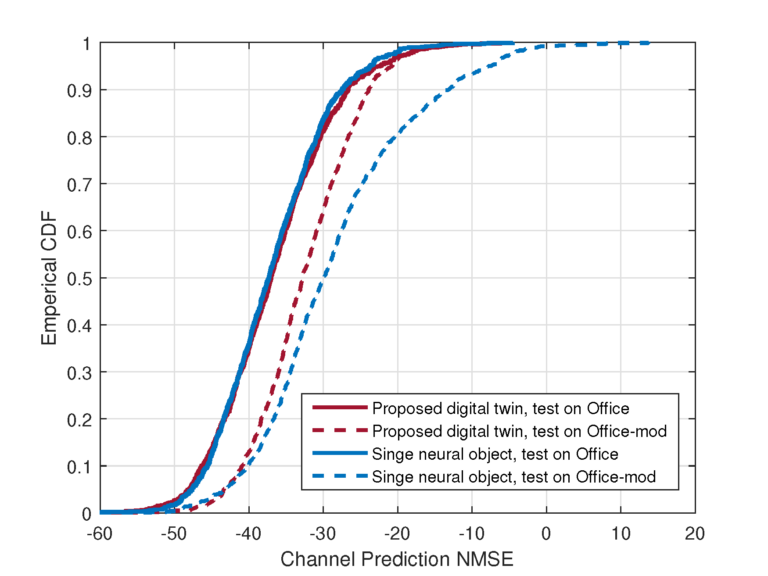Learnable Wireless Digital Twins:
Reconstructing Electromagnetic Field with Neural Representations
IEEE Open Journal of the Communications Society
Shuaifeng Jiang1 , Qi Qu2, Xiaqing Pan2, Abhishek Agrawal2, Richard Newcombe2, and Ahmed Alkhateeb1
1Wireless Intelligence Lab, Arizona State University, USA
2Meta Reality Lab, USA

Fig. 1. This figure illustrates the proposed learnable digital twin framework. The proposed framework leverages the 3D geometry model, UE 6DoF positions, and wireless channel samples to train the neural object and neural interaction models, construct the digital twin, and solve communication tasks.
Abstract
Wireless digital twins, which approximate the wireless environment and signal propagation, find many applications in system design and operation, and are envisioned as key enablers for future wireless systems. Building these digital twins, however, is challenging as it requires modeling, not just the environment geometry, but also the electromagnetic (EM) property and the EM interaction effects. To address these challenges, motivated by the latest advancements in computer vision (3D reconstruction and neural radiance field), this paper develops a physics-inspired and modular deep learning framework for practically constructing learnable wireless digital twins. In particular, the proposed framework segments the environment into objects and learns their EM properties and the EM interaction effects using crowd-sources world-locked wireless channel samples. To showcase the efficacy of the proposed learnable digital twin framework, we evaluate the digital twin by predicting wireless channels based on users’ positions. Simulation results demonstrate that the proposed learnable digital twin can learn the EM property and interaction effects, accurately predict wireless channels, and generalize to changes in the environment, highlighting the prospect of this novel direction for future generation wireless platforms (\textit{e.g.}, self-driving cars, drones, robots, and augmented/mixed reality wearables).
Simulation Results

Fig. 2. This figure shows the CDF of the channel prediction NMSE of learnable digital twin models trained on the Office scenario. The proposed learnable digital twin achieves high channel prediction performance on both the Office scenario and the Office-mod scenario with environment changes.
Citation
Shuaifeng Jiang, Qi Qu, Xiaqing Pan, Abhishek Agrawal, Richard Newcombe, and Ahmed Alkhateeb, ‘‘Learnable Wireless Digital Twins: Reconstructing Electromagnetic Field with Neural Representations,’’ IEEE Open Journal of the Communications Society (2025).
@article{jiang2024learnable,
title={Learnable Wireless Digital Twins: Reconstructing Electromagnetic Field with Neural Representations},
author={Jiang, Shuaifeng and Qu, Qi and Pan, Xiaqing and Agrawal, Abhishek and Newcombe, Richard and Alkhateeb, Ahmed},
journal={IEEE Open Journal of the Communications Society},
year={2025},
publisher={IEEE}
}

